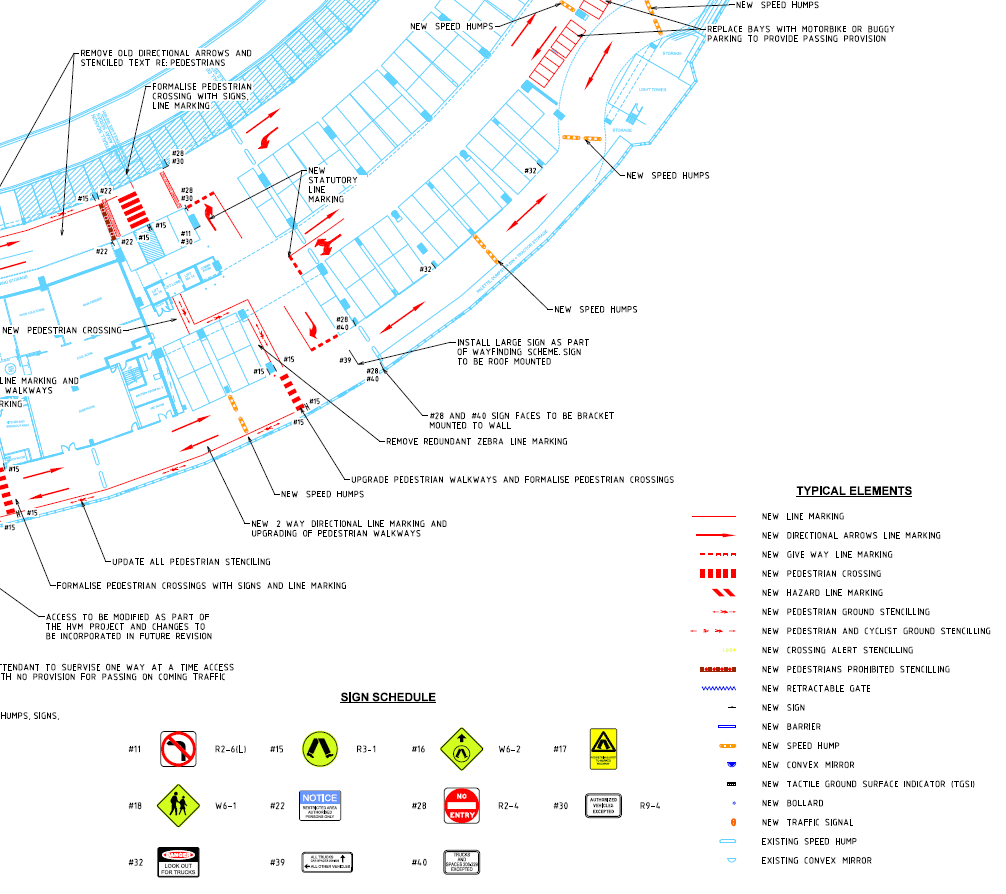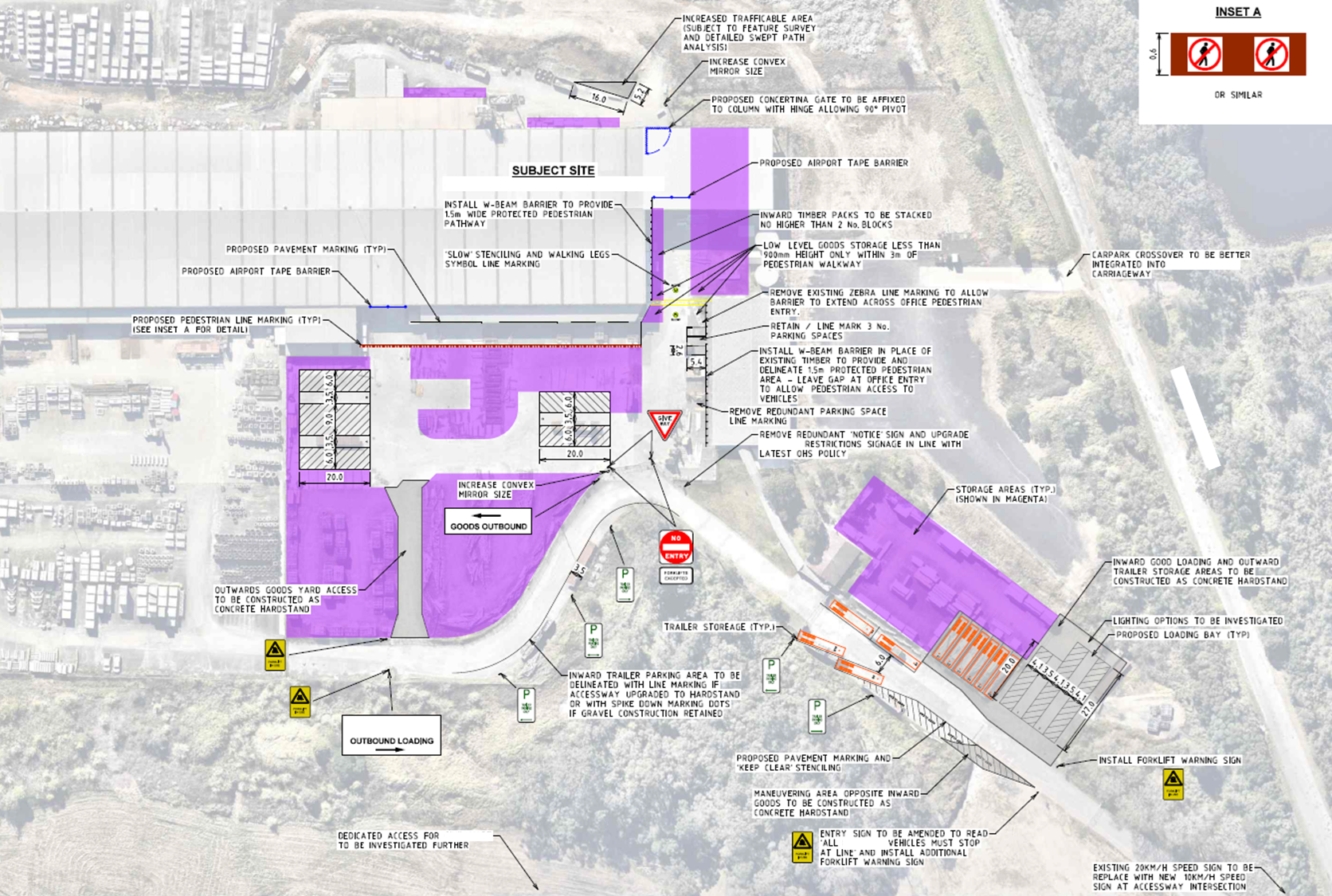Traffic Management Plan
Managing traffic and the interaction between vehicles, plant equipment and pedestrians within a controlled environment is an important part of eliminating and managing health and safety risks at a workplace, site or precinct.
This is particularly significant in and around back-of-house areas such as loading docks, where there are higher concentrations of heavy vehicles and mechanical handling equipment (MHE) operating in a shared space, often negotiating and reversing through confined areas.
The likelihood of conflict and the risk of incidents increases where delivery trucks, waste collection vehicles, forklifts and pedestrians all operate in the same space.
Accordingly, the staff at SALT are often sought by some of Australia’s largest retailers and property owners to prepare Operational Traffic Management Plans (TMPs) for their sites and workplaces.
These sites include:
- Shopping centres;
- Warehouses;
- Industrial sites;
- Distribution centres;
- Sports stadiums; and
- Public car parking areas.

SALT works proactively with clients to prepare Operational Management Plans that are tailored to a client’s needs. We engage with clients through all stages of preparing TMPs including undertaking a detailed walkthrough of the site with a client to gain an understanding of matters that may not be readily observed during a single site inspection, including:
- Existing safety risks and operational concerns;
- Unwanted interactions between vehicles, plant and pedestrians,;
- Inappropriate or missing signage and line-marking; and
- Pedestrian desire lines that may conflict with other operations.
Our preliminary findings are initially summarised and presented to clients with high-level recommendations, which can be workshopped prior to commencing detailed works to ensure that all parties support the traffic management measures that are being proposed. Our design team then prepares a series of traffic management plans that illustrate recommended changes and improvements. This is supported by a traffic engineering report that includes a risk assessment of each hazard (before and after treatment) to allow the effectiveness of treatments be assessed and higher risk items to be prioritised.
We can help you:
- Ensure your workers, customers, visitors and spectators stay safe;
- Reduce disruption to residents and businesses;
- Analyse traffic flow data of your site and surrounding area;
- Manage traffic for special events; and
- Make arrangements for emergency vehicles.
SALT is also an expert in traffic design and Car Parking Plans.
If you need a customised Traffic Management Plan for your project, contact SALT today.

